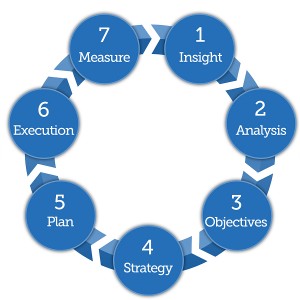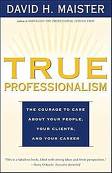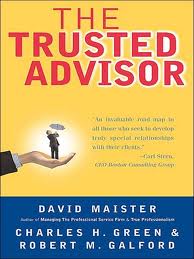This is the 12th post in a series of posts addressing the issue that too many independent management consultants are working too many hours for too little pay.
See the end of this post for a summary and a list of subjects in the series.
This post is about delivery
Delivery
I often meet independent management consultants who know exactly what needs done. In the shortest time imaginable they cut through “the crap” and deliver the recepy for the remedy. Clients are enthusiastic, because they love to get into execution mode fast. Maybe the remedy is right – maybe it is wrong. In any case that’s not how a management consultant is supposed to work. Jumping to conclusions and activities is the last thing a management consultant should do.
The 7 step management consulting process
I recommend using this 7 step process model in all your consulting practice. Management consulting is not just about “getting things done”. It is also a learning process for the client, enabling him to replicate and continue improving the processes and performance after you are gone. The 7-step model enables you to document the findings and conclusions in each phase leaving a trail, which you and the client can use to learn and improve throughout the project.
Insight
Separating insight from previous experience, prejudices, assumptions, presumptions, conclusions, believes etc. is absolutely critical. Insight is the raw data on the specific situation. Try to get data from independent sources. Talking to the clients’ staff, customers, potential customers, suppliers and industry analysts are excellent sources for insight.
Analysis
This is the phase where you draw conclusions based on the insight. You may have to move back and forth between Insight and Analysis until you and the client are comfortable with the premises for what you are about to do.
Objectives
Setting objectives is the foundation for the strategy, but also the only way you can measure if you are successful or not. Objectives should be as SMARTE as possible (Specific, Measurable, Accepted, Realistic, Timed and Ethical).
Strategy
Strategy is the general approach to achieving your objectives. It is a written explanation and justification of how a set of general activities can lead to the objectives defined. Check and double check that the entire project team is aligned on the strategy before moving to planning and execution.
Plan
The Plan is the “What-Who-When”. The plan is normally supported by a budget and an organizational structure.
Execution
Time to execute. Monitor that execution is following the plan and nobody is missing their deadlines.
Measure
In bigger projects you measure regularly during execution and adjust according to the learning. Make sure you also perform regular “project reviews” where you measure performance against objectives on the “macro level” and document what should be improved/adjusted in the future.
Applying the 7 step management consulting process
The 7-step model can be the basis for a 1-hour meeting where you move all the way from step 1 to step 5. And it can be the basis for an 18 months project of bringing a new product on the market, making an acquisition, moving into a new market etc. You can have several small 7-step processes in a big 7-step process. You may have to move back to previous steps if you loose alignment and consistency, if new people come onboard or if major external changes occur.
Do all projects always start at 1 and end at 7?
No, far from. You will often be approached by clients who are in step 5 or 6 and wanting your advice. You will always meet lots of people who mix up objectives with strategy, insight with analysis, strategy with plans and people who just want to execute something now! based on a hunch. It is your job to make sure the client understands the premises and guide him thorough this process.
The 7-step model is simply a framework enabling the management consultant to work structured and secure alignment with his client at all times mitigating project risk as tight as possible.
Recommended literature
I will recommend any independent management consultant to read at least two books by David Maister:
There are relatively few new ideas in business, if any at all. How often can one repeat the basic advice of “Listen to your clients, provide outstanding service, train your people, look for and eliminate inefficiencies, and act like team players?’’ The problem, clearly, is not in figuring out what to do. Rather, the problem is to find the strength and courage to do what we know to be right.
David Maister: True Professionalism
The other book is focused on building deeper relationships with your clients and delivering value on top strategic issues.
In this book, we discuss the importance of trust relationships with clients, showing how trust can be employed to achieve a wide range of rewards. We also explore the relationship between trust and successful advice-giving, the key components of trust and the way it can be nurtured in a relationship.
We offer a way to map the trust development process, and reveal the capabilities that must be developed to successfully navigate the process. We help you determine the level of trust in your current relationships and show you how to be more worthy of trust, and how to make that worthiness evident to your clients.
David Maister: The Trusted Advisor
The next post in this series: The Quest for Certainty
Increase your prices: Summary
I meet and talk with a lot of independent management consultants. 99% of them are extremely busy. They are so busy that they have little time to learn new approaches, keep up with the development in their area(s) and develop their business. Most of them even complain that they are too busy. They also use their busyness as an “excuse” for not being responsive and not meeting deadlines.
When I ask why they are so busy the unison answer is: “client projects”. My response is: “Fantastic, you must be making tons of money?” Answer: “Silence.”
The silence continues when I ask them: “When will you increase your prices and with how much?”
This series of posts will address the “many hours/low price” issue, explain the causes and provide recommendations for how you can remedy the situation. Applying the ideas should enable you to work less hours, make more money and have more fun at the same time.
Other posts in the series:
Post #1: Brand values and positioning
Post #2: Networking
Post #3: Pre-qualification
Post #4: The first meeting
Post #5: Self assessment
Post #6: The objectives
Post #7: The deliverables
Post #8: Pricing
Post #9: The proposal
Post #10: Price and Payment terms
Post #11: Client references
Post #13: Quest for Certainty





Pingback: Increase your prices - part 1 | Helping companies grow
Pingback: Increase your prices - part 5: Self assessment | Helping companies grow
Pingback: Increase your prices - part 8: Pricing | Helping companies grow
Pingback: Increase your prices - part 10: Negotiating the price and payment terms | Helping companies grow
Pingback: Increase your prices – part 11: Client References | Helping companies grow
Pingback: Increase your prices - part 4 | Helping companies grow
Pingback: Increase your prices – part 9: The proposal | Helping companies grow
Pingback: Management Consulting: The Quest for Certainty | Helping companies grow
Pingback: Increase your prices - part 6: The objectives | Helping companies grow
Pingback: Increase your prices - part 7: The deliverables | Helping companies grow
Pingback: Increase your prices - part 2 | Helping companies grow
Pingback: Management Consulting Essentials: Pre-qualification | Helping companies grow